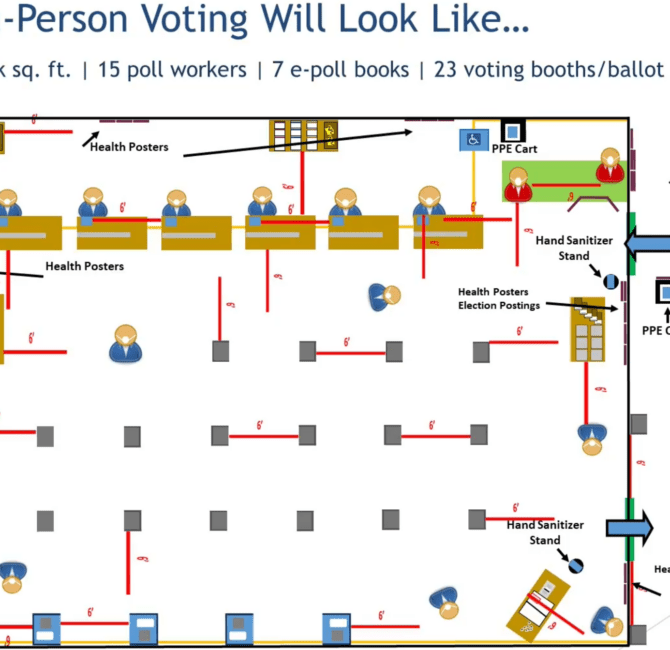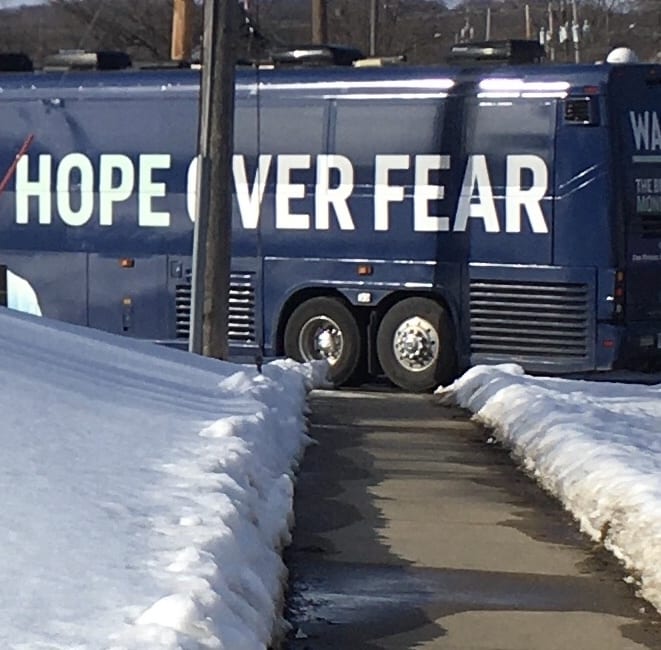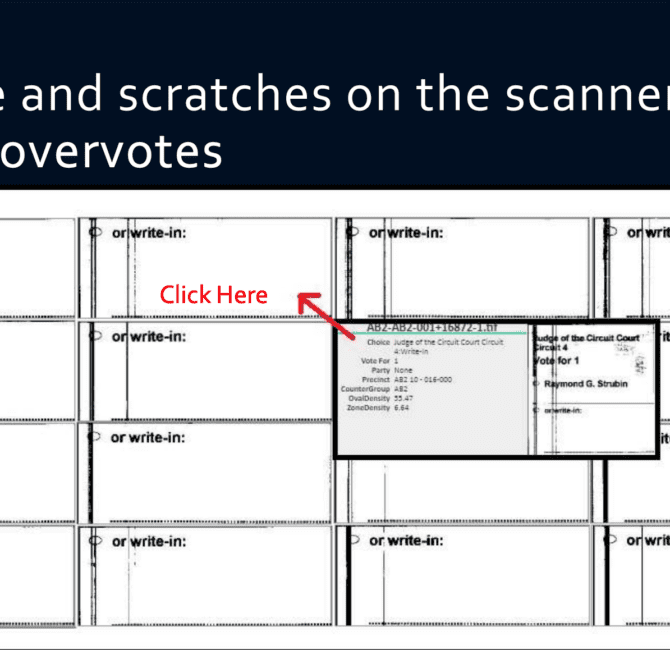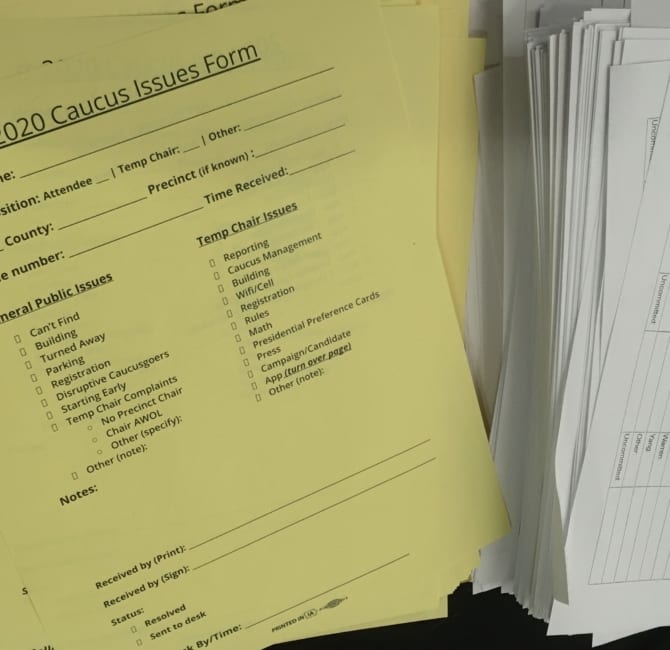New Federal Money Will Lock in America’s Next Wave of Voting Machine Technology
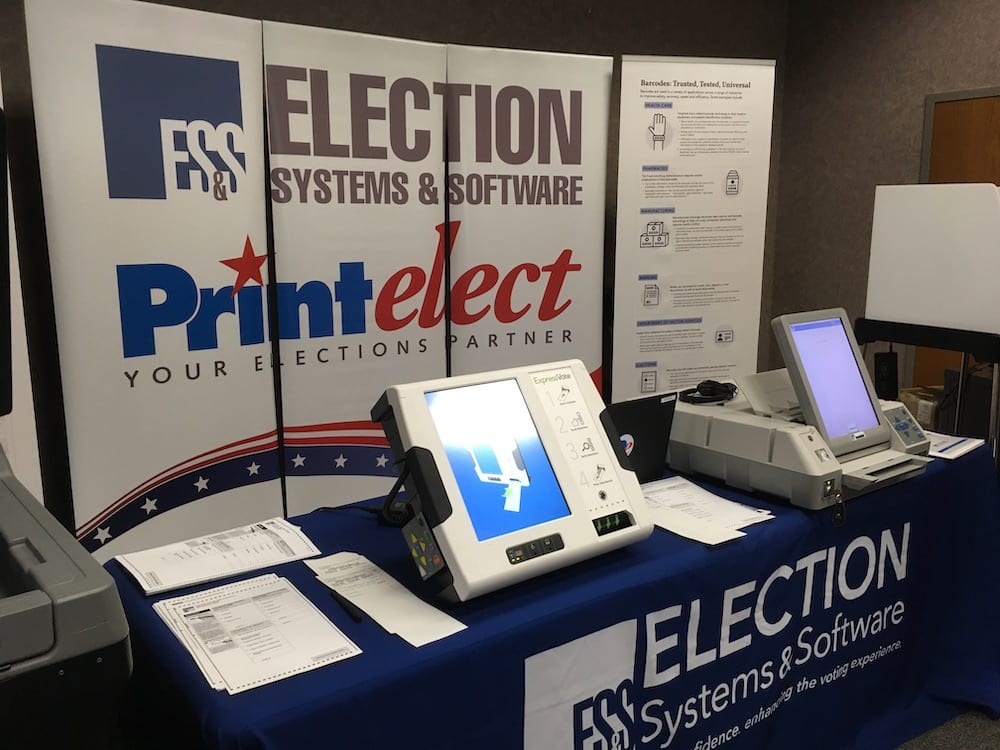
(Photo / Steven Rosenfeld)
A bill awaiting the president’s signature with $425 million in new funding for voting machine and infrastructure upgrades has drawn mixed responses in elections circles—victory claims, tempered praise, and renewed worry.
The federal funds build on $380 million allocated in 2018 for cybersecurity, which included training state and local election staff, modernizing state voter registration systems, and joining a federal program that constantly monitors election system computers for attacks that could disrupt or corrupt voting.
Election administrators welcome any new funds to upgrade their systems, as congressional appropriations are a historic rarity. But the appropriations bill omits new security requirements, even as the new funds will be spent on voting machines and systems to be used for many years.
“Let’s be very clear about this. More money for election security is good, but it is *not* a substitute for passing election security reform legislation that Senate GOP leadership has been blocking all year,” tweeted Virginia Sen. Mark Warner, a Democrat and Intelligence Committee vice chair.
Election transparency activists are particularly skeptical—not because many states and counties need new and better voting systems, but because federal funds will be helping to buy expensive and problematic systems where computer-generated ballot summary cards replace hand-marked paper ballots.
“The stakes couldn’t be higher,” wrote lawyer-turned-activist Jennifer Cohn in the New York Review of Books. “Voting machines that make it difficult or impossible to detect hacking can leave voters susceptible not only to stolen elections, but also to false claims of election-rigging. That is a high price to pay for unnecessary electronic pens.”
What concerns her and like-minded activists is not just that new ballot-casting processes may lead to ballot-counting controversies, but also that the new voting machines—called ballot-marking devices—take longer for people to vote. Many states and counties will debut these systems in 2020’s presidential primaries and use them again in November’s state and federal elections.
“All of the BMDs [ballot-marking devices] have led to much longer lines,” said Susan Pynchon, Florida Fair Elections Coalition executive director, citing delays in recent elections in Georgia and Pennsylvania. “It’s a civil rights issue. People waiting for a voting machine instead of a [marking a ballot in a voting booth]… I don’t know how many people will leave.”
When Michigan debuted BMDs in its 2018 primaries, up to 25 percent of the machines in some precincts jammed during the first hours of voting, the Michigan Election Reform Alliance’s Jan BenDor recalled.
In other 2019 debuts and test runs, other issues surfaced, Voting Booth has reported. Computer touch screens recorded wrong votes. There were sudden voting machine shutdowns. In one Pennsylvania county, the vote-counting software omitted most of one candidate’s votes at the tabulation stage.
The new federal appropriation allows states and counties to spend funds on new voting systems as long as they create a paper record of the votes cast. However, the legislation ducks the question over what constitutes a paper record: a hand-marked ballot or ballot summary card that’s printed out.
A Case Study: North Carolina
Thus the debate over what’s the best record of a voter’s intent continues. In voting, there are many stages in the process and debate about the fairness of those steps. But the controversy over what constitutes the best record of a voter’s intent directly affects how the most disputed results are resolved.
With the president’s impeachment pending, as well as an incumbent president who routinely says that votes have been stolen unless he wins, introducing problematic ballots could increase the risks of a post-November crisis.
However, decisions on what new voting machines to buy are often made at the local level—far below the national political landscape or evidence trail debates. There, sales representatives for a handful of voting system manufacturers, or their subcontractors, have been pushing local officials to buy their wares.
In North Carolina, where a third of the state’s counties are poised to install new voting systems before the March 3 presidential primary, the nation’s biggest voting machine vendor, Election Systems and Software (ES&S), recently told statewide election officials that it could not deliver enough BMDs (its ExpressVote model) to satisfy some big counties’ orders.
ES&S suggested that those counties buy a more expensive model—one that combines the ballot-marking device with a vote-count tabulator—and sought approval from the state Board of Elections (BOE). The approval was needed because the board’s rules require it to evaluate and certify new systems.
The substitute has a different computer operating system, modified software, nearly 90,000 additional lines of computer code and stacked ballot summary cards in chronological order—which could identify the voter, noted Kevin Skoglund, chief technologist for Citizens for Better Elections, in a letter to one state BOE member who later voted against the change.
It is substantively different and embodied what activists who oppose BMDs contend: that there are too many layers of opaque software between a voter’s fingers and the record of their vote—layers that can be altered by hackers or political insiders. They were upset that North Carolina’s state BOE was poised to subvert its rules to accommodate a major vendor.
“Administratively approving a new system with different hardware, software and functionality would negate the entire certification process,” said Lynn Bernstein, an aerospace engineer who founded Transparent Elections North Carolina. “Legislators wisely put into place strict certification laws that help protect our votes, and circumventing this process damages the integrity of our elections.”
But the BOE—with a chair appointed by a Democratic governor in a state with a recent record of GOP-led voter suppression—sided with ES&S, even though it heard from other activists that acquiring hand-marked ballot systems could save counties millions. (Managing volumes of paper ballots poses other challenges, but it is indisputably linked to human actions—and is less costly because far fewer computerized voting stations are needed.)
“We have projected that in the 26 counties that were mainly using the iVotronic DREs [the current system], about $30 million could be saved if these counties were to go with hand-marked paper ballots counted on the ES&S DS200 Digital Scanner and the ADA-compliant AutoMark,” wrote John Brakey, director of Audit-USA, in a letter to the BOE.
Brakey’s analysis was not speculative, but supported by a remarkable and unexpected development in a county with a deep civil rights history—one where lunch-counter protests in 1960 helped spark a national movement.
In Guilford County, where the state’s NAACP chapter president sits on its election board, commissioners approved the system referenced in Brakey’s letter and found that they had more than $5.8 million left in their budget. Those funds were then used to raise the wages of county workers to $15 an hour—including 500 school bus drivers—and to replace public school heating and cooling systems.
“It is practical and it is reasonable,” said Rev. Dr. T. Anthony Spearman, the Guilford BOE member and state NAACP president. “When vendors are given oversight of elections, the cost will always be prohibitive. When the people have oversight, they will be more secure.”
2020 and Beyond
The infusion of $425 million in new federal funds will still not be sufficient to update voting systems across the country. The Brennan Center for Justice at NYU Law School estimates that cost at $2.15 billion over the next five years. But the new federal subsidies will undoubtedly help local officials who are still trying to pay for costly new voting systems.
In Alamance County, North Carolina, county commissioners recently held a hearing and approved borrowing $1.1 million to buy BMDs from ES&S. It is too early to tell if counties like Alamance would see local costs shrink as the new federal funds are disbursed through election agencies.
But Alamance County was not inclined to return to hand-marked ballots, its elections director, Kathy Holland, had told local reporters. She worried that voters would be unfamiliar with marking paper ballots after using touch-screen voting machines for many years. She also said that poll workers would watch for any voters who walked with the ballot summary cards instead of putting them in a scanner. (That happened in Travis County, Texas—home to the state capital of Austin—this past November, delaying the vote count.)
Holland told Voting Booth that ES&S had assured her that there were sufficient BMD machines to fill her county’s order, when asked if the supply issues elsewhere in the state would affect Alamance County.
These rationales and decisions frustrated activists like North Carolina’s Bernstein and Audit-USA’s Brakey, who are posing new arguments to persuade officials to buy voting systems that use hand-marked ballots—and are more secure.
“They could have saved $1.1 million by going with HMPBs [hand-marked paper ballots],” Brakey said in an email, referring to Alamance County.
Nonetheless, local decisions like these will determine what voting looks like across many states for years to come, as voting machinery historically gets replaced every 15 or so years. That’s why the latest infusion of $425 million in federal funds has drawn mixed reactions.
On one hand, officials and allies in policy and vendor circles welcome any new appropriation. On the other hand, activists and others seeking better ways to safeguard the process and resolve vote-counting disputes are seeing missed opportunities.
“When will we learn?” tweeted Ion Sancho, in response to these trends.
Sancho was supervisor of elections in Leon County, Florida, for 28 years, was named technical adviser to the 2000 Florida presidential recount by the state’s Supreme Court and found flaws in electronic voting machines in 2005.
Also Available on: www.nationalmemo.com



